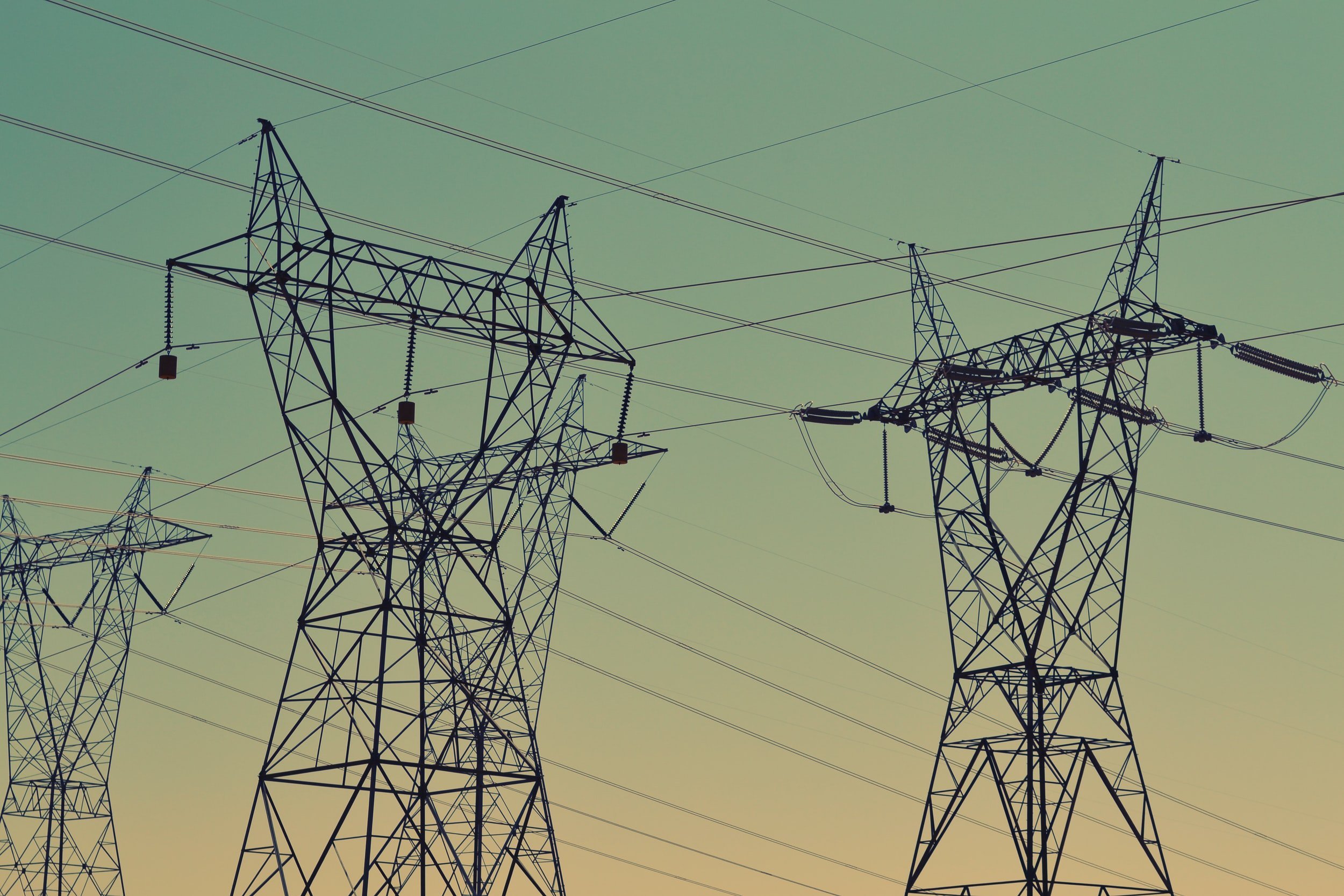An Unprecedented Quarter in the National Electricity Market
Background
The Australian Energy Market Operator (AEMO) released its Quarter 2 (Q2), 2022 Energy Dynamics Report (QED) last week. It paints a sobering picture of a grid caught out by a confluence of unfavourable events all occurring together, just as its transition to clean energy is gaining momentum. This article focusses on the QED’s coverage of the National Electricity Market (NEM).
Mounting fuel prices, coal plant outages and failures, some unseasonal weather and unpredictable dispatch by hydro all combined to produce a quarter where the NEM was suspended for the first time in its history. Our observations from AEMO’s QED for Quarter 2, 2022 cover the key issues that characterised this quarter.
Key Issues
Electricity demand slightly higher and some records are broken
Electricity demand increased across the NEM over the quarter, driven primarily by weather patterns and a lower contribution from distributed PV systems. Nonetheless, new Q2 minimum demand records were set in South Australia and Victoria during April, as we discuss further in the renewables section below.
In Queensland, a new record Q2 maximum demand was set was on 9 June, due to an unusually cold start to winter. The day also recorded the highest intra-day demand change of 3,741MW.
While demand contributed to some of the market volatility in Q2, the majority of the events that contributed to Q2 2022 being an unprecedented quarter arose on the supply side as we discuss below.
Coal-fired generation disrupted with higher outages
Coal-fired plant recorded their lowest Q2 output based on NEM records (down by 8.5% compared to Q2 2021), primarily due to lower availability across the quarter. Planned outages across the NEM were approximately 10% higher, while unplanned outages were materially unchanged from Q2 2021.
While Q2 usually sees higher planned maintenance, unplanned outages surged at the end of April to 3.6GW and peaked at 4.6GW in mid-June.
Across the NEM, coal-fired plant contributes ~60% of the generation on average. With an ageing fleet and the looming prospect of early closures due to the growing role of renewables in the energy mix, the reliability of coal plant has increasingly come into question over the past couple of years, and Q2 2022 was a watershed moment for coal plant – with outages converging with record high fuel prices.
Coal and gas prices surge to all-time highs, leading to higher marginal priced offers
The QED notes that international thermal coal prices rose to A$514/t in Q2 2022, which represented an increase of 40% over the prior quarter. The price increases were due to higher international demand caused by a combination of factors including logistics, wet weather and labour disputes in different markets. Over the quarter, domestic gas prices on the east coast also surged and were capped between late May and through June at A$40/GJ, after having reached parity with and even exceeding international liquefied gas netback prices.
These elevated fuel prices coincided with the coal plant outages and some weather-related short-duration demand surges during the quarter. This resulted in significantly higher marginal bidding prices by coal and gas plant that were required to be scheduled in to cover shortfalls created by the outages and were exposed to the higher fuel spot prices or were required to recontract for additional volumes of fuel. This culminated in volumes offered by black coal plant below $100/MWh dropping by over 2,700MW over the quarter.
Renewables continue to grow while hydro generation is stunted by wet weather
While black coal generation fell to its lowest Q2 output on record, AEMO notes that the overall output of renewable generation (including DER and hydro) was 3.7% higher than in Q2 2021. This was largely driven by wind, increasing its share of the fuel supply mix by 2% - largely because of new capacity and higher wind speeds. Grid-scale solar increased by 0.6% and distributed PV by 0.5%. Even though the capacity and output of solar increased over the quarter (due to increased total supply), the weather led to a relatively lower overall output compared to installed capacity, with output actually declining in Victoria. In total, wind and grid-scale solar output grew by an average of 664MW.
In SA, distributed PV provided 77% of underlying demand contributing to the lowest minimum demand on 3 April 2022 and it provided 38% of underlying demand in Victoria, contributing to a record low minimum demand on 17 April 2022.
In comparison to the same quarter last year, and in spite of high rainfall, hydro power’s share of total generation was only up by 171MW for the quarter. This was due to hydrological constraints at a number of hydro generators caused by high rainfall events, such as downstream reservoirs being at capacity and restrictions on releases to manage flows. Hydro generation was offered at higher prices this quarter, reflecting the value of scarce water supply, higher cost of pumping water and marginal offers reflecting market prices.
The continued increases in utility-scale renewable output are not yet reducing market prices, primarily because they may not generally be available on a dispatchable basis during high demand periods. As noted above, coal outages and fuel supply issues continue to increase the reliance on higher-priced gas generation and are also seeing the price of hydro increasing, as reflected in both the spot market and energy future prices. While the share of renewable and battery projects is likely to keep increasing over time, and policy certainty is returning with a change of federal government, interest rates and international political volatility will continue to impact supply chains and fuel prices for some time. This, in turn, will mean that renewable generation will have little impact on spot market prices in the near term.
With the convergence of the above, the spot price across the NEM for Q2 recorded an average of $264/MWh, more than triple the Q2 2021 average of $85/MWh and forward markets followed the trend with Q3 2022 contracts jumping from $110/MWh in Q4 2021 to $309/MWh in Q2 2022 in NSW, with slightly lower increases observed in other states.
The unprecedented spot market volatility in the NEM resulted in the administered price cap becoming effective across all NEM regions and the market being suspended for the first time in its history.
Administered Price Cap and Market Suspension
Administered Price Caps (APCs) are triggered under the National Electricity Rules where cumulative spot prices in a NEM region exceed the cumulative price threshold (CPT) of $1,359,100 (in FY22) over 7 continuous days. APCs were triggered across all mainland states at different times during 12 -15 June followed by a first ever market suspension across the NEM on 15 June, which remained active until 24 June. AEMO issued a number of Loss of Reserve notices followed by a range of directions to certain dispatchable plant requiring them to cover generation over this time. Those actions by the market operator carry potential compensation and ‘make good’ cost claims that need to be defrayed across market participants (generators and retailers).
The final costs of the events arising from the administered pricing period and market suspension are still unknown as both the Australian Energy Markets Commission and AEMO continue to process respective compensation claims. Retailers and other market customers who may have already been exposed to materially high wholesale prices may be responsible for paying compensation claims to market participants under both the administered price cap and market suspensions compensation regimes.
The AEMC has thus far received compensation claims from 29 participants. It is unclear how many participants have sought compensation from AEMO.
The ACCC has given notice to Market Participants that they will be reviewing the events in June closely. We expect they will be closely examining participant behaviour for compliance with the electricity spot market conduct requirements in the Competition and Consumer Act. We also expect the AER to be reviewing conduct closely for breaches of the National Electricity Rules, particularly the re-bidding requirements.
Alinta Energy has also recently submitted a rule change request to the AEMC to increase the APC to $600/MWh in each NEM region for a period of 12 months to minimise compensation claims, and to provide ‘sufficient incentives for market participants to supply electricity during administrative price events’.
The spot markets across the NEM returned to normal operation progressively from 24 June. Notwithstanding this, spot and contract prices continue to remain elevated during July and August, even though coal and gas plant availability issues have eased.
Battery storage participation across energy and FCAS markets remained relatively unscathed
Utility-scale batteries continued to increase their market revenue over this quarter, with net revenue of $41 million, which was $23 million higher than in the same quarter last year and being the second highest net revenue on record. This was largely driven by higher spot prices, with energy arbitrage and spot market revenue overtaking FCAS revenue as the main source of income for batteries in this quarter, as compared to Q1 2022.
Increased battery capacity over this quarter and the coming years will see the continued and increased dominance of batteries in the FCAS markets, while batteries will continue to flexibly manage their output between the spot market and FCAS in response to market conditions.
Interestingly, during the administered pricing and market suspension events, batteries largely switched from energy markets to the supply of FCAS. This may be due to the relative lack of supply to charge the batteries during these periods, leading to decreased overall availability.
Our observations on the quarter that was
The majority of actions required to substantially address or eliminate the risk of these events occurring again in the short-term are not necessarily able to be deployed at scale immediately (i.e. substantial replacement of coal-fired plant with renewables and storage). Nonetheless, the positive developments since Quarter 2 2022 include comprehensive reviews by AEMO, compensation actions and a separate (but related) outcome in terms of the passage of the Climate Change bill in the Lower House during early August.
Quarter 2 2022 was the electricity market’s version of a Black Swan event – in some ways, unpredictable beyond normal expectations, with potentially severe consequences. However, in many ways, it represented a categoric call to coordinated, hastened and deliberate action towards a substantially decarbonised NEM.
For more information, contact Yatra Forudi at yforudi@renniepartners.com.au




